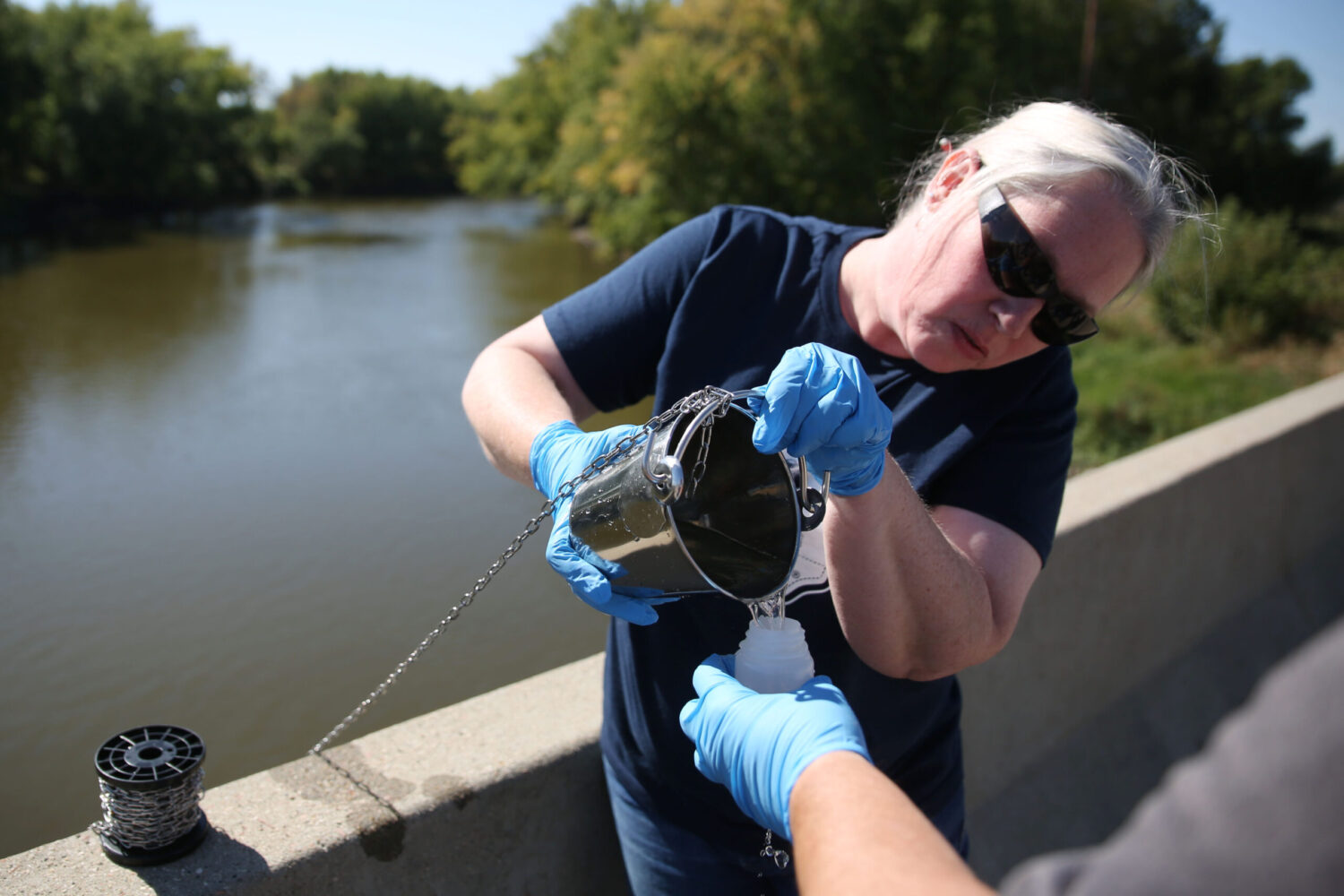
Makenzie Huber, South Dakota Searchlight
The murky brown Big Sioux River consistently receives poor marks for its water quality, but eastern South Dakota water systems near the river don’t know if that pollution includes “forever chemicals.”
To find out, researchers from South Dakota Mines are testing for per- and polyfluoroalkyl substances (PFAS) at the behest of the East Dakota Water Development District.
The study will cost the district at least $100,000 to test 11 sites from northeast South Dakota to the Iowa border past Sioux Falls, including four more sample runs throughout 2025.
“Ideally, we’ll find nothing, and we’ll have spent a lot of money to do that,” said Jay Gilbertson, district manager. “But right now, we don’t know if there is PFAS in the river. It’s hard to be proactive and plan if you don’t have information.”
A separate, federally funded project through the South Dakota Department of Agriculture and Natural Resources was announced earlier this year to assess and clean up contaminated sites in South Dakota. Falls Park, quarry lake and a former rubble site just south of the Sioux Empire Fairgrounds in Sioux Falls are being tested for PFAS and other contaminants that pose risks to the Big Sioux River. The project is in the planning phase, and testing has not started yet.
The chemicals have been used in industry and consumer products since the 1940s and don’t break down easily in the environment or in the human body. Research indicates PFAS exposure may be linked to negative developmental and reproductive effects, and an increased risk of some cancers.

The federal government established new limits on some types of PFAS in drinking water earlier this year. Those limits apply specifically to treated drinking water. The limits do not apply to chemicals found in waterways.
Water treatment plants along the Big Sioux River can pull directly from the river or pull from underground wells near the river. Sioux Falls is the only water system that pulls water from the Big Sioux River, but the city rarely uses the river as a water source.
An ongoing study indicates that, under the right conditions, Big Sioux River water can infiltrate wells near the river.
Gilbertson saw water treatment plants in southeastern South Dakota along the Big Sioux River several years ago experience an influx of hard water in their systems. He said the culprit was Lake Poinsett, near Watertown, which began discharging water into the Big Sioux that seeped into underground wells used by some treatment plants downstream.
That’s why it’s “better to go looking for it,” Gilbertson said, so water treatment plants can prepare solutions before contamination becomes a crisis.
If PFAS is found in the Big Sioux River, the water district can inform public water suppliers, Gilbertson added.
“Maybe we tell them, if they can, not to use the well that’s so close to the river; reactivate one a little farther away,” Gilbertson said. “As a result, they might not technically have a problem and have to stop serving customers because they stopped using the water before it became a problem.”

PFAS has been detected in wells near Ellsworth Air Force Base at Box Elder, as well as Sioux Falls Regional Airport and its co-located Air National Guard base, where the chemicals were used in firefighting foam. The forever chemical has also been detected in wells at National Guard facilities near Custer and in Rapid City, and in three private wells in South Dakota.
Sioux Falls suspended 21 of its wells suspected of PFAS contamination after the detection. Since then, all raw water samples — which can include the Big Sioux River at times — have been tested for PFAS compounds, said Sioux Falls Water Superintendent Chris Myers in an emailed statement. The city has not detected PFAS in those sources.
But even if Sioux Falls doesn’t find PFAS in river tests, that doesn’t mean there isn’t PFAS in the river: It just means it’s not immediately upstream, Gilbertson said.
“It doesn’t necessarily preclude it from the upper basin or below the city,” he added.
Most recently, a preliminary sample of Mount Rushmore National Memorial’s drinking water had levels of PFAS more than two times higher than the new federal limit.
The South Dakota Association of Rural Water Systems is testing 40 rural water systems throughout the state for PFAS chemicals in cooperation with the EPA. Cities are also testing their water and submitting it to the EPA.
Lisa Kunza, associate professor in chemistry, biology and health sciences and director of the Center for Sustainable Solutions at South Dakota Mines in Rapid City, helped collect the initial Big Sioux River samples in September.
Kunza and her team research PFAS contamination impacts on water resources, agriculture and human health. They’re looking for 40 PFAS compounds in the water. She said the initial test results could take a month to several months to get back from the lab.
